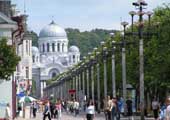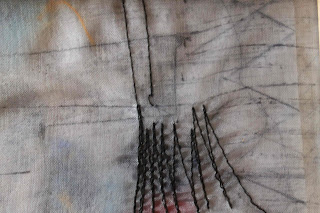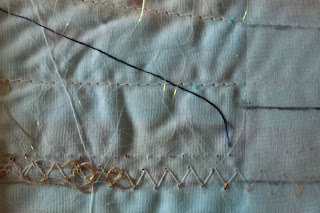http://www.cit.ie/currentnews?id=281
CIT Crawford College of Art and Design Textiles participating in Lithuanian Exhibition

Published on: Monday, 31 October 2011
The 8th International Textiles Biennial is ongoing in Kaunas, Lithuania from 22nd September 4th December 2011. The Biennial is a prestigious platform for interrelations between textiles cultures in the visual and performing arts, as well as between art, science, and industry. This year the Biennial was jointly organised by the European Textiles Network (ETN), which held its Conference and AGM during the opening weeks of the Biennial in September. Pamela Hardesty, Lecturer from CCAD, participated in the Conference, representing CIT in a special Focus that allowed speakers to highlight the networking and exchange activities and opportunities of their respective institutions. The Conference theme in general was REWIND INTO THE FUTURE: exploring ways to empower textile culture for the future, why it is important and what is left to be done for the upcoming generation. The Biennial programme focussed on a major exhibition with juried and invitational fine art textiles works in the National Museum of M. K. Čiurlionis Museum in central Kaunas, and also included many satellite exhibitions within Kaunas and in Vilnius, as well as ongoing performance works, community projects, and workshops (www.bienale.lt/2011).
| Pamela also brought to Kaunas the work of 6 CCAD Textiles Subsidiary students to take part in a special Educational Exhibition in the M. Žmuidzinavičius Museum, Kaunas, organised through TEXERE (Textiles Education and Research in Europe) of which Pamela has been a long-standing active member, and within which was recently elected as Exhibitions Officer. |
The TEXERE exhibition features work from 8 different groups, featuring many levels of textiles education, including design work from digital textile students from AFOL MODA Milano Italy; conceptual body-related work from Y Collective students at the School of Technology at Eastern Michigan University, USA; MA graduates in The Seamless Textile group from Norwich University, UK; as well as work from second-level and adult education courses in Austria, UK, and the Netherlands. This showcase was an important opportunity for the work of these students to be seen and judged by the Biennial audience composed of a spectrum of textile artists, educators, museum officials, and curators at the forefront of the international field.
The TEXERE exhibition was recently reviewed in FIBREQUARTERLY, the online Canadian journal, by Alice Kettle, world-renowned UK textile artist, who stated that it “exemplified the philosophy at the heart of the group itself. This is the education, research and good practice of textiles and the bringing together of textiles process, concept and discussion across continents. . . .” and who commended the richness of “the range and diversity of contributions in this exhibition both geographically and in terms of textile practice.”
The six CCAD students exhibiting completed their Textiles Subsidiary course in May, 2011. Most are now in their Honours Degree year in the Crawford:
 Lorraine Barry: exhibiting digital prints of her own drawings onto cotton with over-felting and stitch that dealt with the dark side of fairy tales;
Lorraine Barry: exhibiting digital prints of her own drawings onto cotton with over-felting and stitch that dealt with the dark side of fairy tales;Renee Carroll: delicate wire house forms on a Perspex shelf with a cast silk form of a baby floating underneath from an umbilical-like cord that traced a story of loss and the fragility of memory (pictured above);
Fiona Creagh: patterning cotton with a very complex painterly textured dye resist in layers that pictured fantasy civilisations within an ice field;
Gwenda Forde: deconstruction and darning, and machine stitch on cotton muslin in a work presenting ageing in a positive way, using her cloth as a metaphor for the body;
Sinead Gibbons: who looked at boats, journeying and history using old maps that she sanded, pigmented, pleated, and smocked in relief surfaces; and
Maeve Lynch: who created a book-like suspended construction of 7 sheets, each composed of fine text fragments screen-printed onto chiffon silk layered with water-drop marked handmade paper to reference a kind of personal prayer through creative contemplation and making (pictured above).








